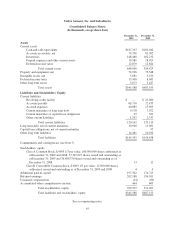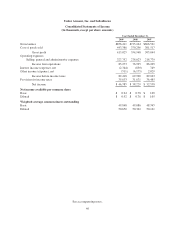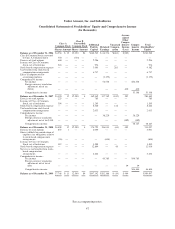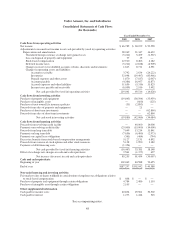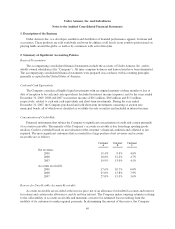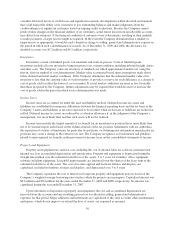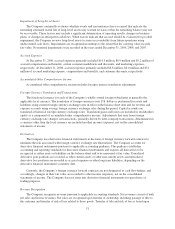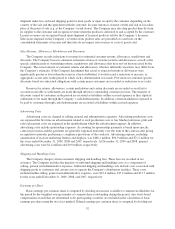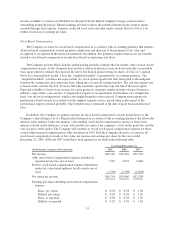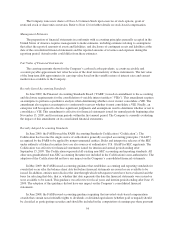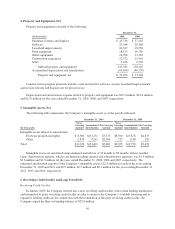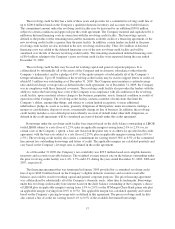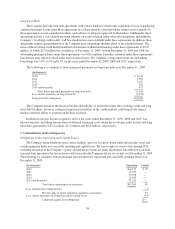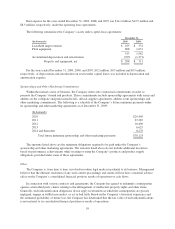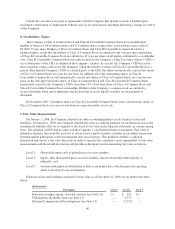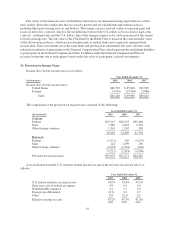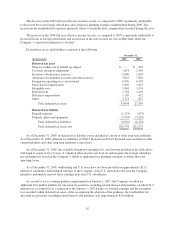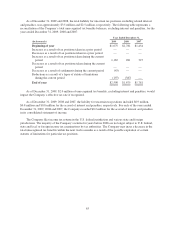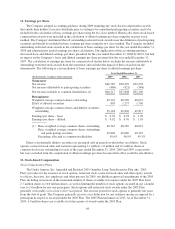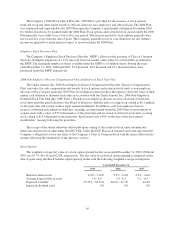Under Armour 2009 Annual Report Download - page 63
Download and view the complete annual report
Please find page 63 of the 2009 Under Armour annual report below. You can navigate through the pages in the report by either clicking on the pages listed below, or by using the keyword search tool below to find specific information within the annual report.
to the two-class method. The provisions of this guidance were required for fiscal years beginning after
December 15, 2008. The Company has adopted this guidance for current period computations of earnings per
share, and has updated prior period computations of earnings per share. The adoption of this guidance in the first
quarter of 2009 did not have a material impact on the Company’s computation of earnings per share. Refer to
Note 11 for further discussion.
In June 2008, the FASB issued accounting guidance addressing the determination of whether provisions that
introduce adjustment features (including contingent adjustment features) would prevent treating a derivative
contract or an embedded derivative on a company’s own stock as indexed solely to the company’s stock. This
guidance was effective for fiscal years beginning after December 15, 2008. The adoption of this guidance in the
first quarter of 2009 did not have any impact on the Company’s consolidated financial statements.
In March 2008, the FASB issued accounting guidance intended to improve financial reporting about
derivative instruments and hedging activities by requiring enhanced disclosures to enable investors to better
understand their effects on an entity’s financial position, financial performance, and cash flows. This guidance
was effective for the fiscal years and interim periods beginning after November 15, 2008. The adoption of this
guidance in the first quarter of 2009 did not have any impact on the Company’s consolidated financial
statements.
In December 2007, the FASB issued replacement guidance that requires the acquirer of a business to
recognize and measure the identifiable assets acquired, the liabilities assumed, and any non-controlling interest in
the acquired entity at fair value. This replacement guidance also requires transaction costs related to the business
combination to be expensed as incurred. It was effective for business combinations for which the acquisition date
was on or after the start of the fiscal year beginning after December 15, 2008. The adoption of this guidance in
the first quarter of 2009 did not have any impact on the Company’s consolidated financial statements.
In December 2007, the FASB issued accounting guidance that establishes accounting and reporting
standards for the noncontrolling interest in a subsidiary and for the deconsolidation of a subsidiary. This
guidance was effective for fiscal years beginning after December 15, 2008. The adoption of this guidance in the
first quarter of 2009 did not have any impact on the Company’s consolidated financial statements.
In September 2006, the FASB issued accounting guidance which defines fair value, establishes a framework
for measuring fair value in accordance with generally accepted accounting principles and expands disclosures
about fair value measurements. This guidance was effective for fiscal years beginning after November 15, 2007,
however the FASB delayed the effective date to fiscal years beginning after November 15, 2008 for nonfinancial
assets and nonfinancial liabilities, except those items recognized or disclosed at fair value on an annual or more
frequent basis. The adoption of this guidance for nonfinancial assets and liabilities in the first quarter of 2009 did
not have any impact on the Company’s consolidated financial statements.
3. Inventories
Inventories consisted of the following:
December 31,
(In thousands) 2009 2008
Finished goods $155,596 $187,072
Raw materials 785 731
Work-in-process 71 6
Subtotal inventories 156,452 187,809
Inventories reserve (7,964) (5,577)
Total inventories $148,488 $182,232
55


